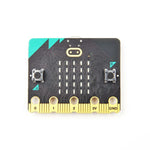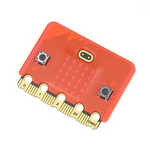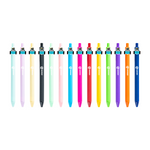Menú
Hands-on Learning: How Block Building Kits Ignite Classroom Creativity
In modern classrooms, the importance of hands-on learning is increasingly evident. Teachers find that inviting students to learn by doing cultivates deeper understanding and lasting interest than listening alone. This raises a question: why are block building kits becoming classroom favorites? These simple tools are quietly turning classrooms into student creative studios.
The Value of Hands-On Learning
Hands-on learning gives students an active role and immerses them in constructing knowledge. It brings several educational benefits:
Higher engagement and focus. Practical activities enliven lessons. Compared with passive listening, students stay more focused and show less drowsiness or off-task behavior when they work with their hands. Surveys indicate that 81% of students who dropped out believed they would have stayed engaged if classrooms had offered more real hands-on learning opportunities.
Stronger critical thinking and problem solving. During practice, students encounter challenges and seek solutions, training analysis and reasoning. When a block bridge keeps collapsing, students ask how to make the structure more stable, developing engineering thinking and creative problem solving.
Better teamwork. Many block projects require group collaboration. Students learn to communicate, listen, and coordinate. In this climate of classroom creativity, learning is no longer solitary but a shared exploration.

More importantly, hands-on practice significantly enhances students’ understanding and memory retention. Compared with passive listening, actively engaging in the construction of knowledge allows students to grasp concepts more deeply and truly understand the principles behind them. Teachers have also observed that hands-on classrooms make students more engaged and focused, helping them transform knowledge into practical skills and making the learning process more vivid and effective.
How Block Building Kits Encourage Creativity
Block building kits turn play into structured creativity. They guide students through a continuous loop of building, imagining, experimenting, and refining—the essence of design thinking. Instead of memorizing facts, students construct, test, fail, and improve, learning resilience and adaptability along the way. Each learner finds a personal path to success: some focus on structural strength, others on aesthetic design. The open-ended nature of blocks means there is never just one correct answer—only countless possibilities to explore.
For instance, a group of students might try building a bridge between two desks. It collapses, so they rethink and reinforce it until it stands firm. Another group designs a “classroom farm,” using windmills and small shelters to automate plant watering. In these projects, abstract ideas become tangible. Obstacles turn into lessons—how to balance forces, how to cooperate, how to test until something works.
As one educator from Edutopia notes, the block area is more than a play space—it’s a lab for collaboration, where principles like gravity teach both physics and teamwork.
Through building with blocks, students learn to imagine boldly, take risks, and enjoy the process of creation through continuous improvement. With the rich sensors and components included in the kits, students are no longer simply assembling blocks — with kits like those from ELECFREAKS, they learn to imagine, test, and create with purpose, turning their wild ideas into tangible, real-world projects.
Teachers’ Perspective: Creativity in Practice
From teachers’ viewpoints, block building kits unlock innovative teaching. A single set supports STEAM integration across science, technology, engineering, art, and math.
-
Lower grades: shapes, colors, patterns, and storytelling that blend art and language.
-
Upper grades: load-bearing structures, simple machines, and sensor-based mini-engineering projects that link physics, math, and engineering logic.
These activities turn abstract concepts—balance, force, geometry—into concrete models.
Equally important, kits enable collaborative learning. Students ideate, divide tasks, and solve problems together. They practice communication and shared responsibility. Limited pieces and space encourage sharing and patience. Block corners teach negotiation, compromise, cooperation, and problem solving with scarce resources. Many teachers report that project-based use of kits energizes the classroom; peers inspire one another, and the room feels like a collaborative studio. Blocks naturally engage interest and support development across domains—verbal expression, social-emotional learning, and fine-motor skills. In practice, teachers increasingly treat block kits as partners for STEM activities and as creative tools that let art and imagination flourish.
Blending Classic Play with Modern Tech
With technology in education, classic blocks gain new life. Modern block building kits now combine construction with coding and electronics, moving toward “smart learning.” Students add logic and interactivity through programmable kits, writing simple code to enable motion and sensing—essential 21st-century skills.


ELECFREAKS combines traditional blocks with micro:bit and other microcontrollers to create creative, programmable education kits. Students build imagined shapes and then “bring them to life” with micro:bit—turning creations into moving excavators, motorcycles, or race cars. These block building kits with coding deepen classroom learning. A push-toy car becomes an autonomous, obstacle-avoiding robot. When code has a bug, the car misbehaves; students debug until it works—building computational thinking and perseverance.
To help students explore the fusion of technology and creativity through hands-on learning, ELECFREAKS has been continuously expanding the possibilities of block-based education. For example, two of its latest products — the Nezha Pro AI Mechanical Power Kit and the Nezha Pro Ocean Kit — perfectly embody this philosophy:
Nezha Pro AI Mechanical Power Kit combines artificial intelligence with mechanical design. Equipped with intelligent modules, motors, and sensors, it enables students to build robots that can recognize objects, respond to voice commands, and perform automated actions. The kit makes abstract AI concepts tangible, helping students understand how data, motion, and logic interact in real-world applications.
Nezha Pro AI Mechanical Power Kit combines artificial intelligence with mechanical design. Equipped with intelligent modules, motors, and sensors, it enables students to build robots that can recognize objects, respond to voice commands, and perform automated actions. The kit makes abstract AI concepts tangible, helping students understand how data, motion, and logic interact in real-world applications.
Nezha Pro Ocean Kit is themed around ocean exploration, integrating hands-on creativity with environmental education. Students can build and program marine robots such as submarines, tide monitors, or cleanup vehicles, learning about sustainability and ocean conservation through practice. It connects STEM learning with ecological awareness, encouraging students to use technology-driven thinking to solve real-world problems.
Using these two products as examples, ELECFREAKS demonstrates how innovative educational tools allow students to experience the process of “learning through creation and creating through learning.” This approach not only makes classrooms more engaging and dynamic but also seamlessly blends science, design, and imagination into every learning experience.
Impact on Learning Outcomes
Introducing block-based projects improves both performance and attitudes. Engagement rises; formerly distracted students work intently. Many who feared difficulty now iterate to improve their builds, developing patience and grit. When students are absorbed and enjoy the work, they learn more deeply and remember longer.
Hands-on projects also strengthen collaboration and classroom climate. Quiet students start sharing ideas; competitive students learn to listen and compromise. Teachers report fewer discipline issues as everyone stays busy creating. Many note students “learn longer and deeper,” continuing research and improvements after class.
Block kits carry significant value for creativity and whole-child growth. They fit STEAM’s call for integration and innovation. In one project, students design artistically, ensure structural soundness, and program interactive behaviors—being both “engineers” and “artists.” Visible progress builds confidence and pride, which fuels pursuit of harder challenges. Hands-on block learning boosts academic results and nurtures innovation and lifelong learning.
Conclusion & Takeaway
Block building kits are reshaping education by connecting play, engineering, and creativity. They foster engagement, teamwork, and innovation—core skills for the future.
As classrooms evolve, ELECFREAKS continues to lead in turning imagination into innovation. The AI Mechanical Power Kit helps students explore artificial intelligence through hands-on robotics, while the Ocean Kit brings sustainability and technology together beneath the theme of ocean exploration.
Each project built, each idea tested, becomes more than a classroom activity—it’s a spark of creativity that prepares students for the challenges of tomorrow. Every block, every wire, and every line of code is a step toward building the next generation of creators.
- Elegir una selección da como resultado una actualización de página completa.









